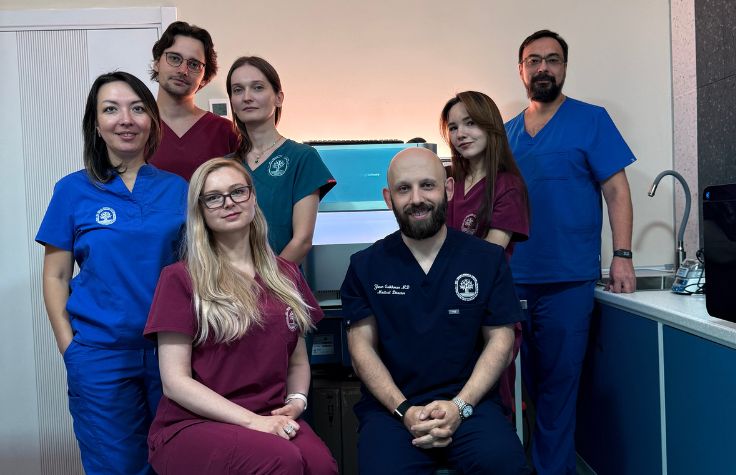
April 20, 2016
Genomics is transforming oncology research with the ultimate goal of advancing the way cancer is diagnosed, treated, monitored and eventually screened. John Leite, Vice President of Marketing in Illumina’s Oncology business, discusses recent progress in the field as well as hopes for the future as today’s research is translated into the clinic.
How is genomics shaping oncology research today?
Cancer traditionally has been classified by its morphology, meaning what a pathologist sees under the microscope. A major shift is now occurring thanks in large part to genomic research. We’re starting to move away from categorizing cancer based on its morphological features to classifying cancer in a way that will inform more effective treatment.
An example I like to use is a form of leukemia known as myelodysplastic syndrome (MDS). There are subclasses of MDS, including those that are classified by auer rods or ring sideroblasts. These types of sub-classifications are useful to a pathologist because they can see the small sub-structures under the microscope. But the incremental value these classifications mean to a treating physician is actually fairly marginal.
Compare this to a classification of MDS with Deletion 5q, a form of MDS where part of chromosome 5 is missing. This classification is very significant in terms of how a physician would treat a patient because based on the genetic component, patients typically respond very well to a drug called Revlimid. We are seeing this trend emerge with more cancers with genetic classification. Genomics is helping us to define the disease based on the genetic markers that may drive the malignancy and may serve as therapeutic targets.
Illumina is providing leadership in this area by developing research solutions, from panels to instruments and software, while also working towards advancements that may improve oncology diagnosis, prognosis, treatment and monitoring in the future. We are pursuing regulatory cleared products, as well as participating in a number of clinical trials and partnering with pharmaceutical companies to develop companion diagnostics with their therapies.
Oncology is such a broad field. Where, in terms of applications, is Illumina focusing its attention?
Somatic variant detection is foundational to Illumina’s Oncology business. Our products in this area include TruSight Tumor 15. We are also working on an assay that will be launched later this year, TruSight Tumor 170, as part of a system where we are streamlining, standardizing and integrating the entire process of identifying somatic mutation variants. Identification of somatic variants is critical in assigning patients to the right targeted therapy or combination of therapies. We’re looking to be market leaders in this area.
I’m also very excited about immuno-oncology, an emerging application where we’re building competencies very quickly. Recent clinical trials focused on different immunotherapies have shown some very promising results for patients that would have poor outcomes otherwise.
In immuno-oncology, many different parameters must be assessed to come to a holistic view of how the patient’s immune system is interacting with the cancer, and to determine if they are candidates for immune therapy. For instance, neo-antigen detection may indicate that some patients are candidates for vaccination or T-cell therapy, and can be identified using whole exome sequencing (WES). Illumina is the market leader in WES, and we are ideally positioned to deliver the most competitive research tools to help you develop solutions that would identify good candidates for immunotherapy.
Tumor-infiltrating lymphocytes are another parameter that may assist in predicting how patients will respond to therapy. Tumors that contain these lymphocytes – immune cells that can infiltrate the tumor – generally have more positive outcomes because their presence means that the patient’s immune system is engaged in fighting the cancer. This parameter can be assessed via gene expression, and a researcher could use Illumina’s transcriptome or RNA-Seq solutions to develop the diagnostic tools that could conduct such analyses in the future.
There is also the overall question of what inflammatory processes are engaged in any individual case. This is also a gene expression question, and researchers could conduct studies using RNA-Seq or RNA Access as two options from Illumina’s portfolio.
Additionally, there are immune modulatory genes that cancers use for ‘evading’ a person’s immune system. These genes include PD1, PDL 1 and CTLA-4. Expression of these genes is a strategy that the tumor employs to escape detection by immune cells. Illumina’s RNA-Seq and RNA Access are again candidates for study in this area.
I think the combination of WES and Illumina’s RNA solutions can be a very powerful research tool, because one can interrogate multiple parameters of the immune system and arrive at a broad understanding of the cancer’s environment, and how a cancer may respond to certain immune therapies. I think Illumina is uniquely poised to deliver streamlined and powerful research solutions in immuno-oncology.
Will genomics have a role to play in each step of a patient’s journey? How?
The first question is always – does this individual have cancer? I believe genomics will provide solutions that enable better diagnostic options for classifying the disease [compared to morphology as previously discussed] to really inform the physician – what is the driver of this particular patient’s disease?
Specifically, what we hope to deliver is an assessment of somatic mutation variants, using tissue-based evaluations or circulating tumor DNA (ctDNA) solutions if there isn’t sufficient biopsy material.
After diagnosis, the next question is – what is the overall risk profile for this patient? Is this a low-risk or moderate-risk or high-risk cancer? Many genes have prognostic implications. One can gain a sense of the overall risk profile for a patient using a combination of clinical factors, as well as the mutations that are detected.
We believe this knowledge will ultimately lead to more personalized treatment selection, the next step of this journey. We want to enable quick and accurate therapy assignment. For example, in the case of a diagnosis of MDS with Deletion 5q, a patient would be assigned Revlimid based on the genetic profile. There are many examples like this, such as in lung cancer, where mutations in a number of genes (e.g. EGFR, ALK) can lead to specific inhibitors being assigned.
More and more of these genetically targeted drugs are coming into the mix, and we could one day use a tool like an IVD-cleared version of TruSight Tumor 170 to assign patients to the right therapy or to identify available clinical trials for them.
Once a patient is undergoing treatment, you then want to know, is this the right therapy based on everything I know about this patient? Based on the particular genetic drivers of the disease, based on any germline variants that could be altering how that patient is going to respond or metabolize the drug, or perhaps have some kind of adverse reaction to that drug.
We are also evaluating ctDNA for monitoring post-treatment or post-surgical intervention. If we can identify the individual mutant clones in a person’s cancer, we can monitor those same variants in blood. We could look for the depletion of that variant upon successive therapy or intervention and hopefully not see the return of the variant, which could be correlated to a relapse. If we did see the variant again, that could be an early warning signal to perhaps change therapy or intervene in a different way.
Where do you see the field heading next?
Illumina is working to expand the ‘continuum of care’ that I just discussed. Thanks in part to our work with ctDNA, we can now think about an earlier stage of the continuum – screening. That has been the main driver in the formation of GRAIL. GRAIL’s mission is to identify cancer using ctDNA, by screening for molecular evidence of cancer ahead of any imaging or histology-based evidence being available. This could be very exciting for oncology, in that we know early detection is very much closely correlated with ultimate outcome success.
There are additional questions as well. How is an individual’s cancer going to evolve? Are they going to relapse? What is their overall survival probability? Beyond the patient, is their family at risk? If I’m heading a cancer center or national healthcare plan, and I take a population view of these patients, I also ask, how can I manage the population appropriately and cost-effectively?
These are the types of questions that really motivate me in my work here at Illumina and are potential directions that are still theory right now, but have huge societal implications.
Research Use Only. Not for use in diagnostic procedures.


